Mini Cooper SE 2024 review: All-new electric hatchback is playing to the crowd
Mini has listened to its customers
The adage about the customer always being right has withstood the test of time, and Mini, it seems, has acknowledged that. For about 60 years now, the Cooper name has been used to refer to Minis with a little more power than the standard variants, but it has somehow become synonymous with the Mini Hatch (as opposed to the Clubman, Countryman , etc.) in general parlance. So now Mini has bitten the bullet and ditched the “Hatch” name in favour of “Cooper” when referring to it’s small car.
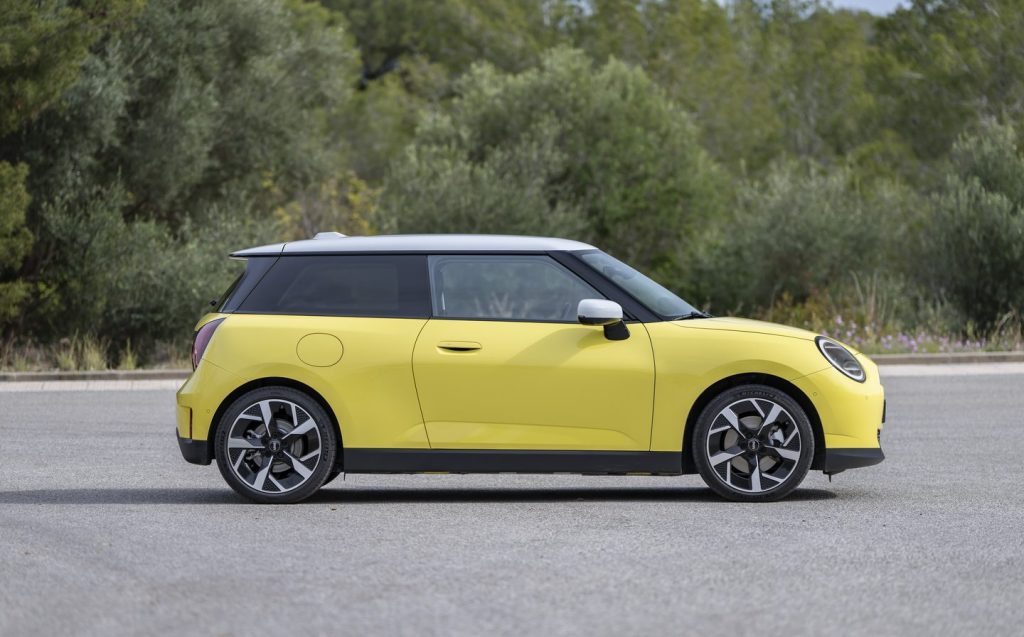
And the name isn’t the only area in which Mini appears to have admitted defeat. The brand is undergoing quite the revamp at the moment, and electrification is, predictably, playing a large part in that.
Mini already produced an electric version of the Hatch, which came with a pitifully small range of around 140 miles (less in the real world). However much the marketing bods described it as a “right-sizing” solution intended to be adequate for urbanites, and with a light battery enables sportier handling, customers were put off and the old Mini Electric wasn’t the success it’s makers might have hoped.
So now the new model is available with a choice of two different electric powertrains, as well as a selection of petrol-powered options. Crucially, both the electric models have bigger batteries than their predecessor did.
But the most striking change is the new design, which is part of Mini’s wholesale brand update. Until the beginning of this year, the company really hadn’t changed much about its vehicles for years, so Mini is now taking the opportunity to phase out its older stock, replacing it with more modern interpretations such as this.
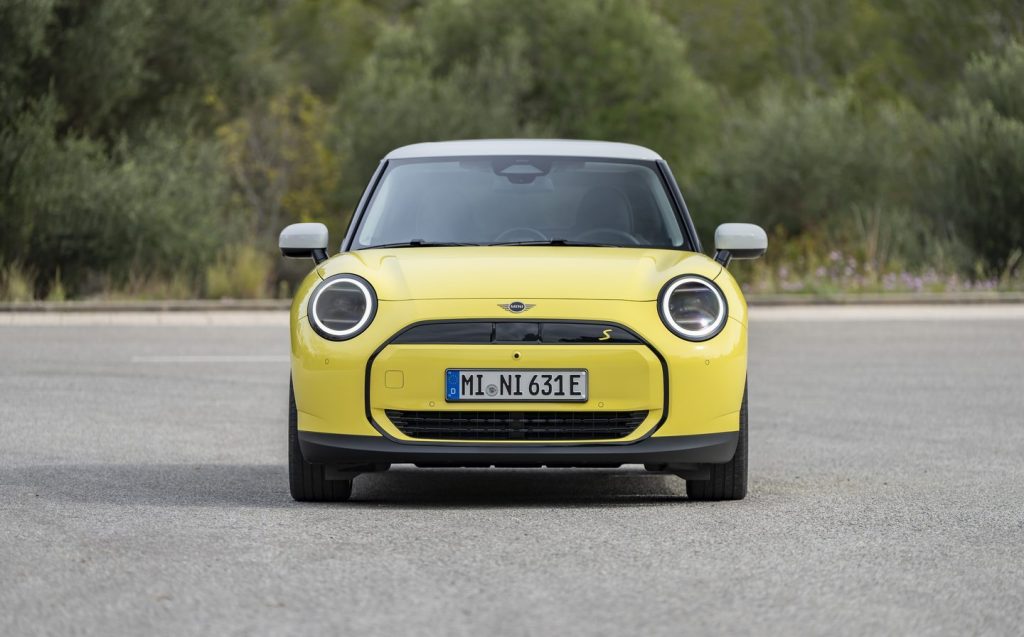
It’s a cleaner, more modern shape that’s reminiscent of previous iterations but still very clearly different, with slightly more pronounced lines and a less turgid image. But there’s no mistaking it for anything other than a Mini, with that frame on the nose that hints at a grille and the circular headlight signatures.
The interior has changed, too, and this might very well be our favourite thing about the new-look Mini. The dashboard design has been pared back and cleaned out, leaving just a fabric-coloured surface, a chunky, sporty steering wheel and some smartly designed ‘toggle’ switchgear for powertrain start, gear selection and driving modes.
Oh, and there’s the small matter of the circular infotainment system.
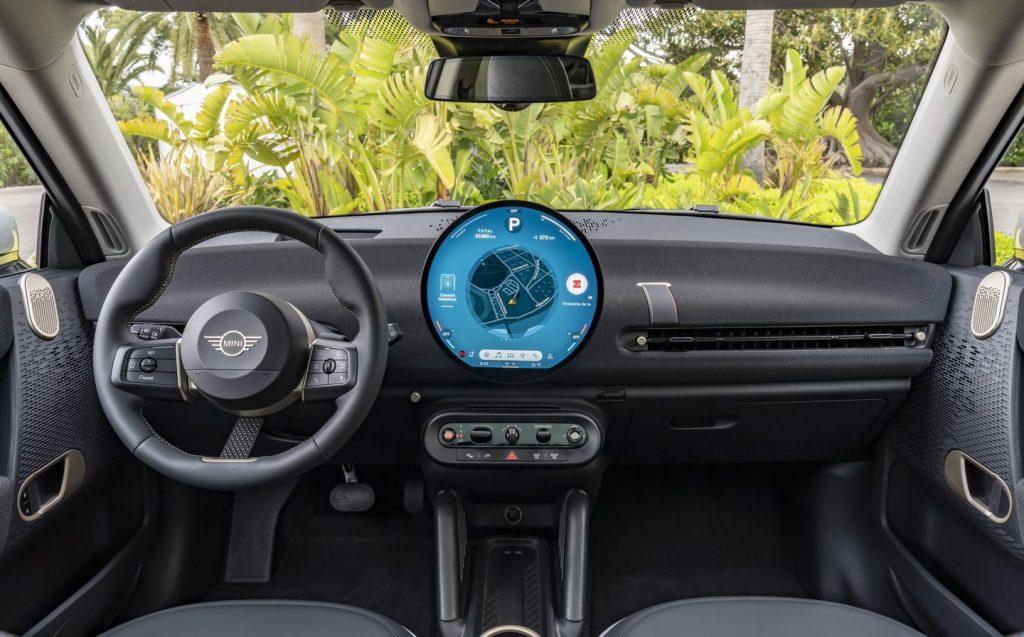
Unlike previous BMW-made Minis, this isn’t a round housing with a rectangular screen inside; it’s a properly round screen — using Oled technology — designed to evoke memories of the 1959 Minis with their central speedometers.
It uses parent company BMW’s latest software to provide a wide range of functions and displays for owners to peruse. Sharp displays and some cool personalisation options — you can even change the background image like a smartphone wallpaper — mean it looks great. However, take it on the road and it suddenly becomes a bit of a distraction, with tricky menus that keep your attention for a little too long. Were it our money, we’d spend a little bit extra to get the head-up display that provides some of the most important information in your line of sight.
Not that you need to spend all that much more to get plenty of kit. The basic Cooper, with its little three-cylinder petrol engine, comes in at £23,135, yet it still gets LED headlights, the circular touchscreen, two-zone climate control and a reversing camera, as well as parking sensors, cruise control and automatic lights and wipers. The head-up display is part of the £2,000 Level 1 option pack.
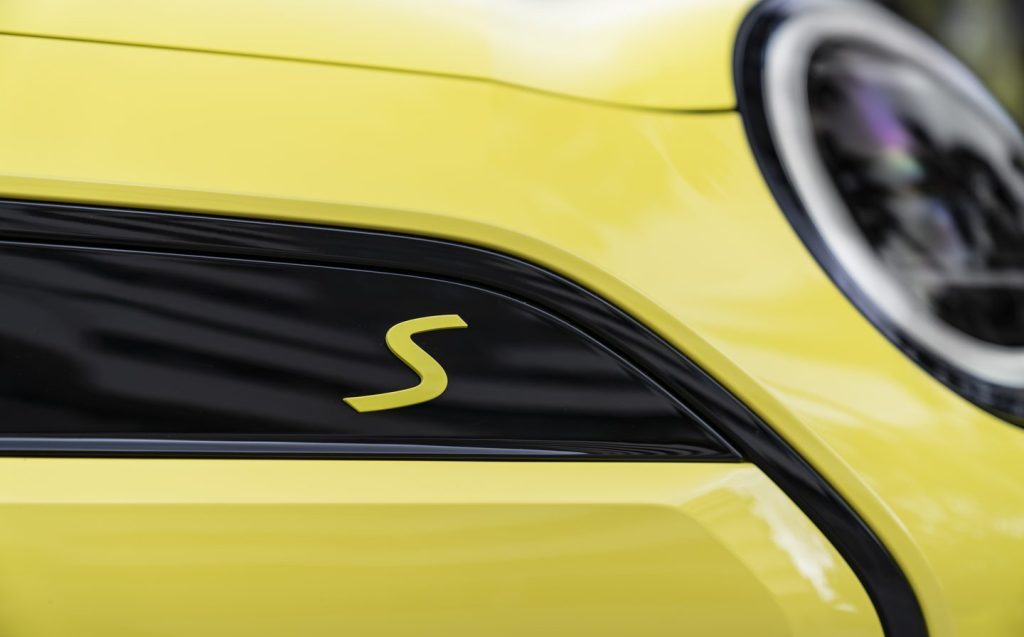
As you may have expected, the electric models cost a fair bit more — the entry-level Cooper E costs from £30,000 — but with that level of standard equipment and plenty of performance, it still isn’t bad value for money. Especially when the smaller Fiat 500e is priced at just over £28,000.
And don’t go thinking you’re getting short-changed in terms of performance. Even the Cooper E has a 181bhp electric motor and a 40.7kWh battery that can take it around 190 miles on a single charge, while the SE tested here has 215bhp and manages 250 miles on its 54.2kWh battery. At least they’re the official figures. Drive it like you stole it or just cruise on the motorway and you won’t manage anything like that. Especially when the weather is cold (which affects the electric vehicles’ battery chemistry). But around town, you’ve got half a chance.
And when the battery does run flat, the Cooper E’s 75kW charging capability means you can recharge it fairly quickly, with a 10 to 80 per cent charge achieved in less than half an hour at a compatible rapid charging point.
Though the SE’s battery is bigger, a maximum charging speed of 95kW means it can be topped up just as quickly.
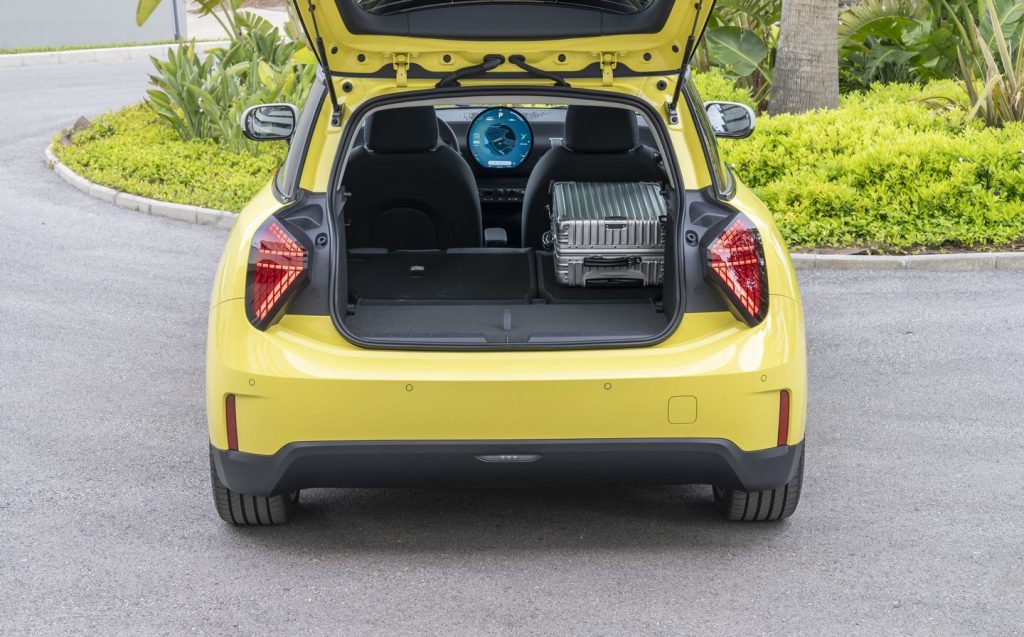
But if you don’t fancy the charging faff, or you don’t want to pay a near-£7,000 premium, you can have one of the petrol-fuelled Coopers. The entry-level C has a 154bhp three-cylinder engine, while the S gets a 201bhp four-cylinder unit. Both drive the front wheels alone via an automatic gearbox — there’s no manual model available at this stage.
Mini says it has engineered both the petrol and electric versions of the Cooper to drive in a comparable way, with an emphasis on sportiness. While Mini bangs on about go-karts like an irritating child who desperately wants a Christmas present, there’s something to be said for the way it sets up its vehicles, which are regularly among the most fun to drive in their respective classes.
The new Cooper is no exception, with sharp steering, plenty of grip and good body control. It will tug at the wheel a bit if you put your foot down hard in the SE, but that’s manageable and the performance is plentiful, which only adds to the sense of fun.
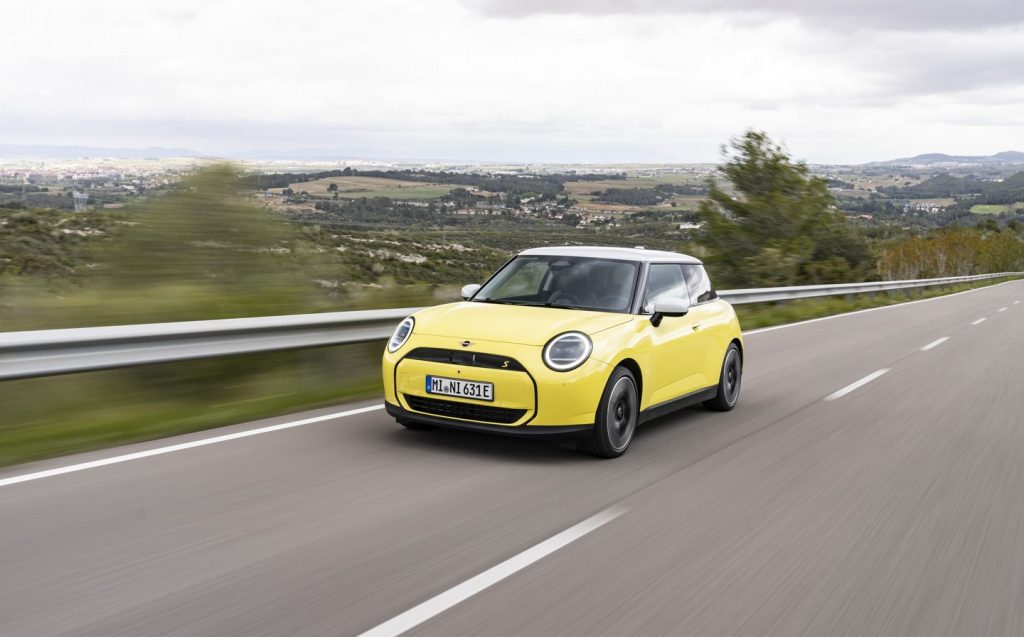
But it isn’t all sunshine and rose petals. The focus on body control that has made the car so stable in the corners has meant the ride is a bit firm. It isn’t disastrous, and you don’t feel as though you’re riding a pogo stick, but it means you can feel bumps through your hands and backside, even on roads that you previously thought were smooth.
More irritating, however, is the soundproofing that seems a bit lacking in something with such a quiet powertrain. Turn off the annoying synthesised noise system and you’re left with some prominent road noise and a bit of wind noise at higher speeds. It’s not a deal-breaker but seems like a bit of an oversight from a company that’s so fastidious in its build quality.
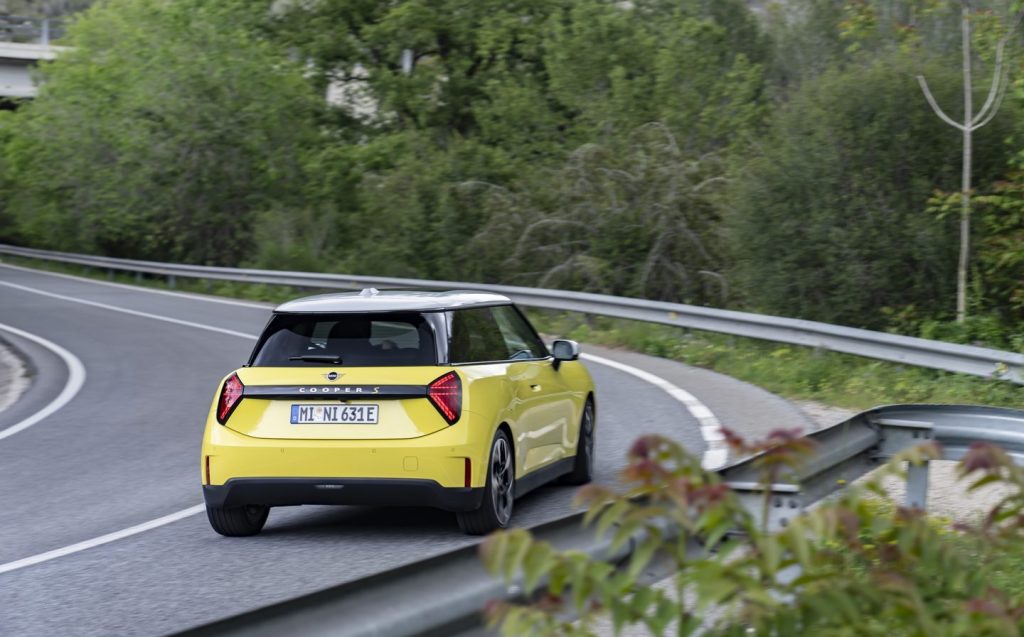
What it never feels, though, is spacious. The boot is a bit compact, to say the least, and so too are the rear seats. Getting in is a bit of a squeeze, and though taller adults might be able to contort themselves onto the rear bench, they won’t find it very comfortable when they get there, with leg- and headroom both proving limited.
But then nobody is buying a Mini for its roominess — at least not a three-door one — and while we aren’t completely sold on the design, particularly at the back, the personalisation options and the cabin layout will give the new model plenty of appeal to the target market.
As will the choice of fuel options, the capability of the electric models and the way the car drives. It’s a good car, but more importantly, it’s likeable, and that will matter far more to would-be buyers.
Related articles
- If you found our review of the new electric Mini interesting, you may like to check out the new Mini Countryman JCW
- Read more about Mini’s built-in video gaming system
- Will electric car prices go down in 2024?
Latest articles
- Five best electric cars to buy in 2025
- Should I buy a diesel car in 2025?
- F1 2025 calendar and race reports: The new Formula One season as it happens
- Zeekr 7X AWD 2025 review: A fast, spacious and high tech premium SUV — but someone call the chassis chief
- Denza Z9GT 2025 review: Flawed but sleek 1,062bhp shooting brake from BYD’s luxury arm
- Extended test: 2024 Renault Scenic E-Tech review
- Best-selling cars 2025: The UK’s ten most popular models of the year so far
- Audi A6 Avant 2025 review: Trusty executive estate ticks expected boxes, and there’s still a diesel option
- Keir Starmer eases pressure on carmakers to sell EVs in response to ‘global economic headwinds’



















